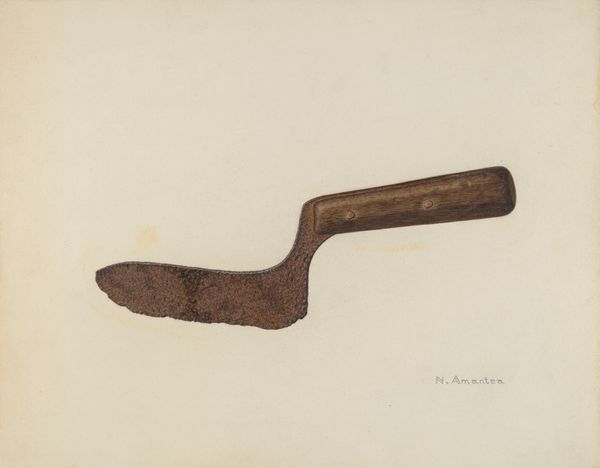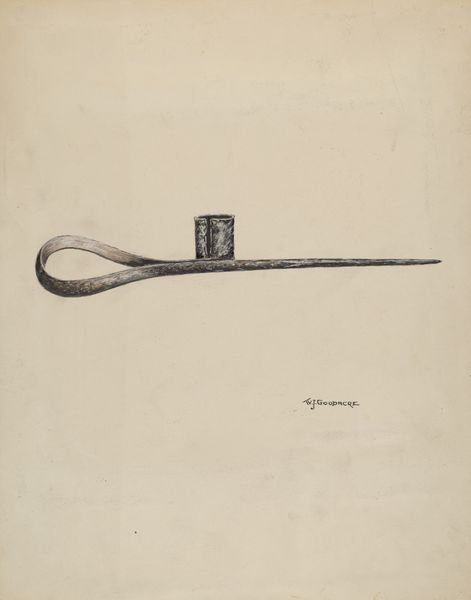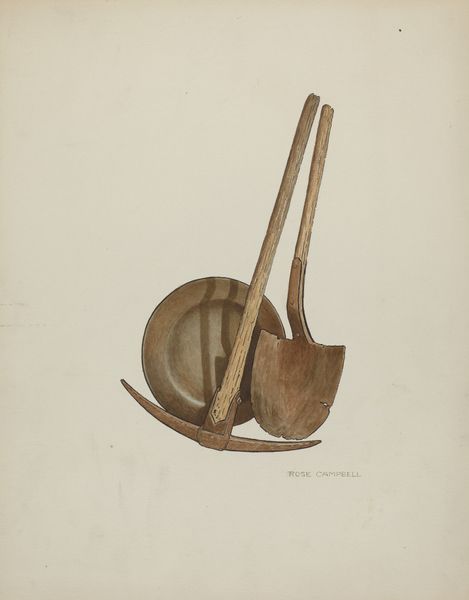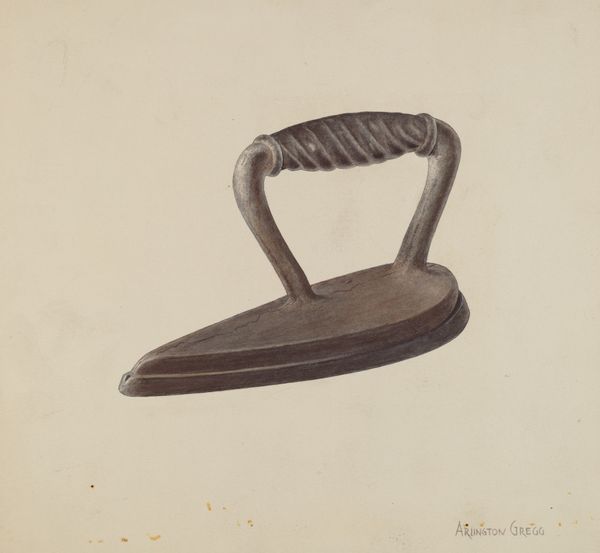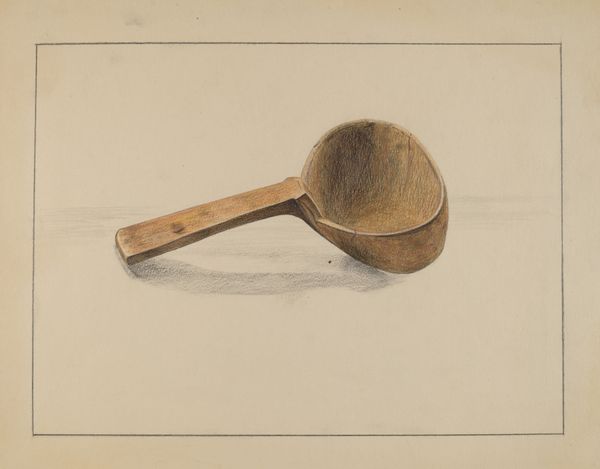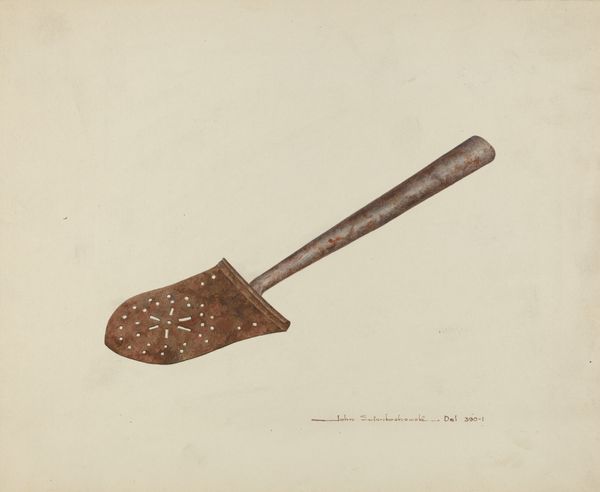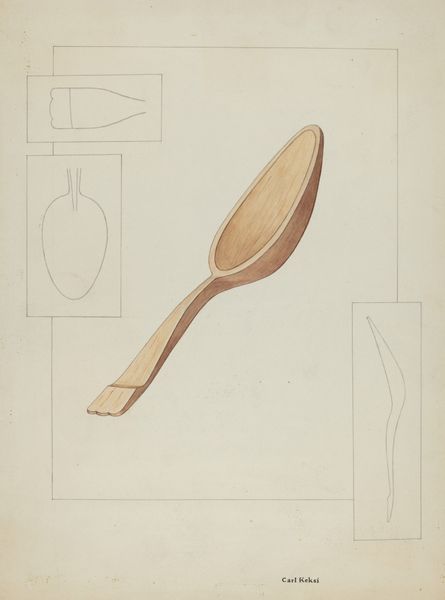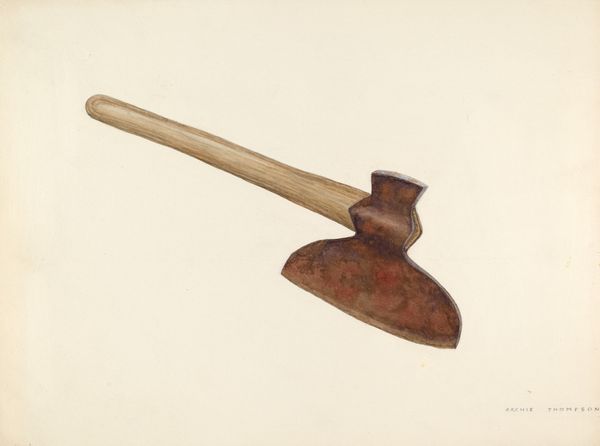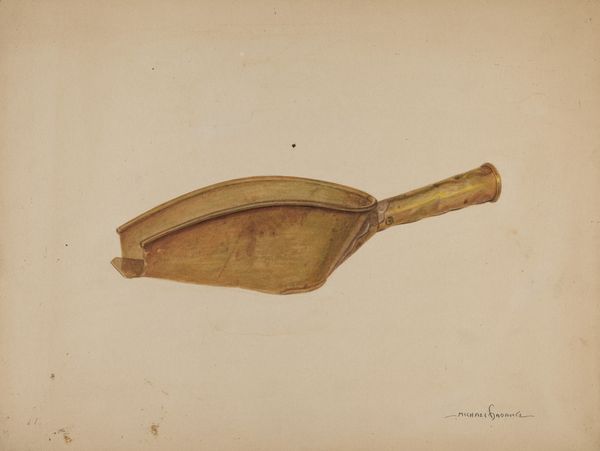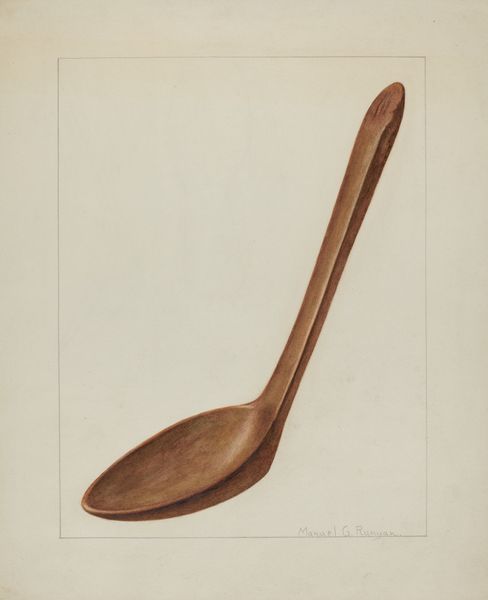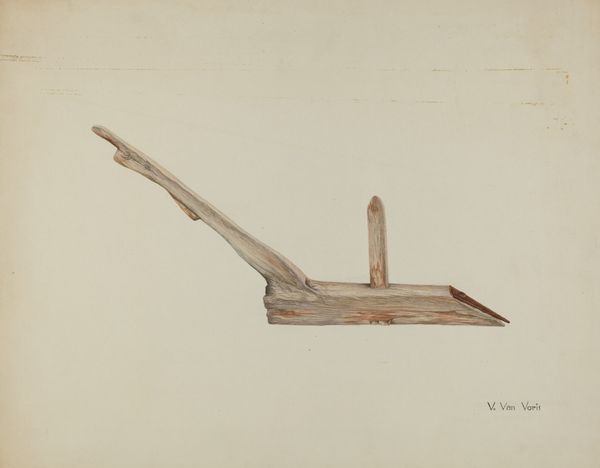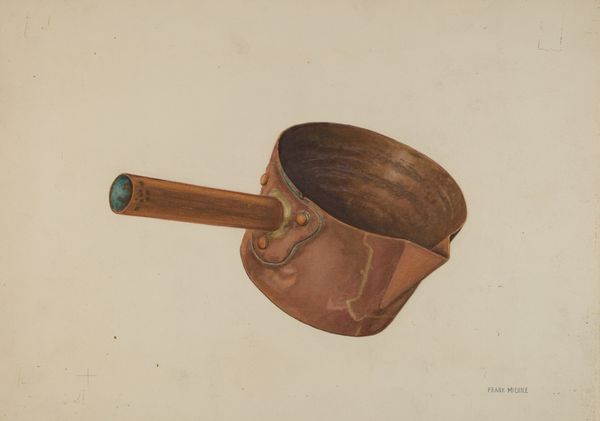
drawing, pencil
#
drawing
#
pencil sketch
#
pencil drawing
#
geometric
#
pencil
Dimensions: overall: 22.6 x 27.9 cm (8 7/8 x 11 in.) Original IAD Object: 8 1/2" high; 5 1/2" wide
Copyright: National Gallery of Art: CC0 1.0
Curator: Here we have John Hall's "Butter Mold," a pencil drawing made sometime between 1935 and 1942. Editor: My first impression is of something simple, functional. It looks very precisely rendered, like a blueprint almost, but with a worn and rustic feeling. The object itself looks timeworn. Curator: Yes, Hall's choice to depict a functional, everyday object elevates it. This was during the Depression era. Think about the public art projects of the WPA, documenting American life and labor. Does this drawing fit into that spirit for you? Editor: Absolutely. It’s about the handmade, the process. I’m interested in where the material comes from – what kind of wood? And the skill involved in carving something like this, both the mold and its representation in a drawing, which highlights labor often overlooked by the elite art world. Curator: And in focusing on the process, are we glorifying something or simply recording its existence, or perhaps both? Think about who's likely to consume butter molded like this back then versus now. It speaks to a certain kind of domestic sphere, doesn't it? Editor: Precisely! There's that implied contrast of production and consumption; and, the value added by both the maker of the butter mold, the butter itself, and now even this piece's ability to reflect social status over the years. It shows a system of material hierarchies. Curator: Do you think displaying art about everyday, functional objects invites audiences to think about history in new ways? Editor: Absolutely. It grounds history in the tangible and the relatable. Instead of grand narratives of presidents and wars, it focuses on the textures and implements that shaped ordinary lives and gives credit to overlooked labor and objects, both equally. Curator: It’s fascinating how a seemingly simple object can open up these rich conversations about value, labor, and the making of history. Editor: Yes, art brings history back into reach—through both tactile form and concept.
Comments
No comments
Be the first to comment and join the conversation on the ultimate creative platform.

